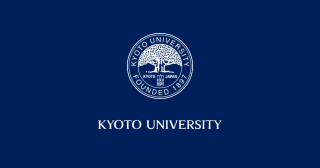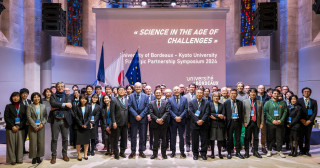On 26 April, Kyoto University Library completed publication of the "Fujikawa Collection" of historical medical books in its Rare Materials Digital Archive, making all of the approximately 5,000 volumes available for public viewing.
The books were systematically collected by Yu Fujikawa (Litt D and MD, 1865-1940) in the process of compiling History of Japanese Medicine , a masterpiece chronicling the development of medicine in Japan. Dr Fujikawa donated these volumes to the Library on three occasions, with the first provided in 1917. The collection consists of Chinese and Japanese publications dating back to the Meiji Period, and translations of Western works published during the mid- to late Edo Period.
Among the titles published on 26 April is Oranda zenku naigai bungouzu oyobi kengou, a book of anatomical diagrams translated from Dutch and published in 1772. It features pages with flaps that can be lifted to reveal muscles, circulatory organs, and bones.
Kyoto University Library started digitizing and publishing the Fujikawa Collection in 1998, processing about 2,000 titles in FY2016 and 2,700 in FY2017 as part of three large-scale document digitization projects*. The Fujikawa project was completed on 26 April with the publication of 1,647 additional items.
* Large-scale digitization projects for FY2016 and 2017
- Project to restore and digitize the Fujikawa Collection for preservation and publication; Contributing to the establishment of a research infrastructure providing a comprehensive picture of Japanese medical history (funded by Japan's science and education ministry MEXT)
- National Institute of Japanese Literature’s Project to Build an International Collaborative Network for Pre-modern Japanese Texts
- Open Access Promotion Project, a part of the KyotoU Strategic Priority Action Plan

Anatomical illustrations in Oranda zenku naigai bungouzu oyobi kengou (property of Kyoto University Library)
Lifting a flap on each page reveals muscular, cardiovascular, or skeletal anatomies.
Related links
- Kyoto University Rare Materials Digital Archive: Fujikawa Collection
https://rmda.kulib.kyoto-u.ac.jp/en/collection/fujikawa - Oranda zenku naigai bungouzu oyobi kengou
https://rmda.kulib.kyoto-u.ac.jp/en/item/rb00001397





